Jeez, again a town-hall meeting? And again a waste of time…
Or:
Ugh, not another team building, please.
That’s how your team members might react to potential get-togethers on the horizon. No wonder. In fact, 61% of workers feel they waste time in meetings, and one in three (31%) dislikes team-building activities in the workplace.
But the key problem is not that corporate events like these exist in employees’ schedules; it’s how they are held. Teams often perceive them as boring gatherings with no substantial purpose, doing nothing but provoke a yawning chain reaction and drain work hours.
So, how about reimagining the next corporate gathering and transforming it into: “Wow, what a fantastic team moment it was!”?
Follow this guide to corporate meeting transformation, whether on-site, remotely, or in a hybrid work environment.
Table of Contents
- The Most Commonplace Types of Team Meet-Ups
- The Best Strategies for Turning Any Corporate Gathering into a Meaningful Moment
- Make Inclusion the Default.
- Bring Interactivity into Play—Literally.
- Share “Human” Moments, Not Just Obligatory Information.
- Start with Positivity and Wrap It Up With Positive Takeaway Emotions.
The Most Commonplace Types of Team Meet-Ups
Regular Meetings
Ah, the bread and butter of any team’s life. We can’t imagine a workplace without a classic, regular meeting, where teams strategize, share updates, brainstorm ideas, and so on—anything amid these:
- Annual planning
- Quarterly kick-off meeting
- Daily check-in or stand-up
- Brainstorming session
- Retrospective (aka retro)
- Town-hall gathering
If annual kick-off meetings are widespread across industries, retros are ingrained in SaaS companies in particular.
Skill-Boosting Workshops or Training Sessions
A corporate training meet-up is always about developing employees’ competencies, both hard and soft skills.
By format, this can be:
- In-person learning
- Virtual training session
- Hybrid workshop
By duration, these can take from a couple of hours to a few days (or even weeks).
For example:
Outback helped AmeriCorps organize a week-long remote group seminar that consisted of four programs, including Emotional Intelligence and Practical Time Management.
Team-Bonding Events
Such a corporate meet-up is usually meant to foster stronger interpersonal connections and build a closely knit team.
Nope, it’s not another trust fall.
It might be:
- Corporate party
- Workation
- Annual retreat
- Team outing (e.g., a sports game or a picnic party outdoors)
- Cultural exchange day
For example:
The PlentyOfFish team chose the Amazing Chase, organized by Outback, for their annual outdoor team building.
Company-Wide Celebrations
To raise glasses for “We’ve survived Q1/Q2/Q3/Q4!” and blow off steam, these are the ones some workers may be secretly looking forward to, if only they are planned and arranged properly.
But overall, corporate celebrations may be as follows:
- Birthdays
- Work anniversaries
- Quarterly milestones
- Holidays, such as St. Patrick’s Day or Halloween
- Award ceremonies
- End-of-year parties
The Best Strategies for Turning Any Corporate Gathering into a Meaningful Moment
Make It Purposeful with a Clear Mission.
If your corporate meetings are just boxes you idly tick in your team’s calendar, start with this: “Why are we gathering? What for?”
For Simeon Genadiev, Managing Partner at The G Law Group, “What for?” is the golden key unlocking true meaning behind any meet-up of their legal team. He urges, “A corporate meeting shouldn’t feel like another task in your schedule just to be ticked as done. Let it become a meaningful mission rather than just another agenda. Even if you don’t fully accomplish it, it beats perfection every time and bonds your team members over a shared purpose.”
This is particularly significant for Gen Z employees seeking meaning in work and life.
So, set missions like the Transparency Mission (to communicate openly and honestly) or the Morale Mission (to boost the team’s spirit amid tough times). It can also be well measurable.
Planning a philanthropic team-building activity? Wonderful! Unite your workers around one common mission.
For example:
This November, The G Law Group will participate in the Steps for Healing, a charitable event with the team’s goal of raising $2,500 for the Children’s Bereavement Center.
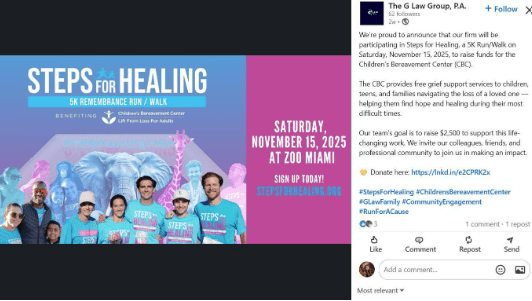
Create Sensory Experiences (They Are More Stimulating and Memorable).
Did you know that sensory stimuli are the best drivers of positive memories and impacts?
That’s what science says. And the formula of the five senses is also applicable when it comes to running more impactful and successful meetings at work.
Here it goes:
- Sight
- Sound
- Touch
- Smell
- Taste
For example:
Explore several possible scenarios of using those during corporate gatherings.
The Sensory Experience of Smell and Taste
Let’s take the SYLTBAR team that actually adores meetings. Why exactly? These meet-ups are completely different. Yes, they strategize and set business goals. But! “The highlight is always the famous blind tasting” of their product.
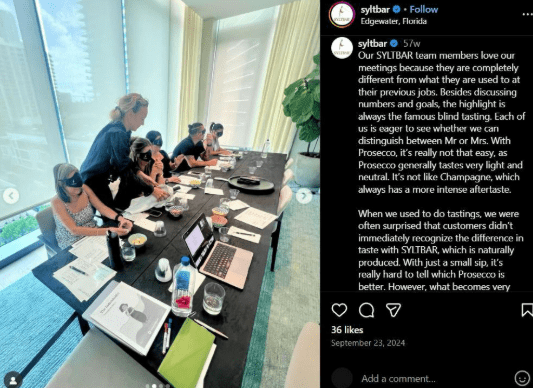
The Sensory Experience of Sight
The annual team meeting at Connected Consulting wasn’t all spreadsheets and strategy sessions. It capped off with magnificent fireworks.
The Sensory Experience of Sound
You can also stir your employees’ senses with audio effects, especially when working remotely. Organize a Virtual Happy Hour with pub soundscapes and hear the glasses clinking at Hamish McDuff’s.
Alternatively, embark on a musical challenge, a Virtual Billboard Bingo, and test your song knowledge with a competitive twist.
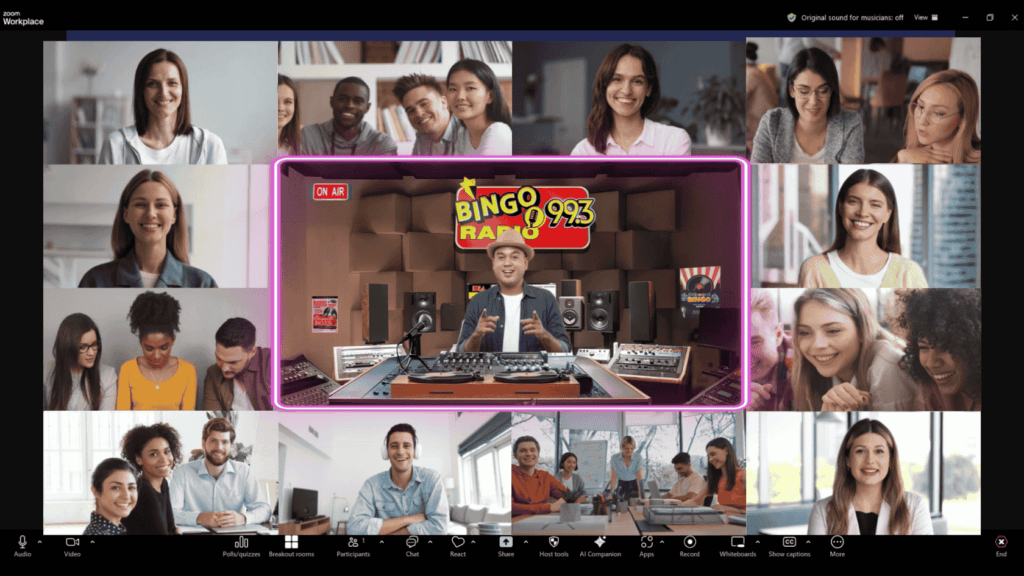
Or—
As the holidays approach, a Virtual Winter Jeoparty could be a superb idea for the Christmas season. Make your online holiday party unforgettable with the whoosh of the skis slicking through crisp snow.
Make Inclusion the Default.
“Everyone feels welcomed and included” should be the psychological dress code, so to speak—no matter what, even if someone wears pajamas under the desk during your Zoom meeting.
Consider several fundamentals that will help you make employee inclusion the standard, not the option, during your corporate meetings:
- Accessibility for employees with disabilities
- Alignment of time zones and work schedules (Note: Cisco predicts that in 98% of cases, at least one worker will join a team remotely. This increases the demand for hybrid meeting arrangements.)
- Inclusive vocabulary
- Food inclusivity
- Non-awkward team-building activities for introverts and extroverts alike (Note: Only 48% of introverts are satisfied with their participation level in meetings, compared to 85% of extroverts).
- Feedback option variety (both open and anonymous, with diverse idea-submission variants)
For example:
Let’s take Microsoft. The company organizes monthly town-hall events with the CEO in a virtual format. To make the experience as welcoming as possible for everyone, they encourage every employee to speak up and ask questions, use inclusive language in communications, add media subtitles to all videos, and adopt more accessible presentations.
Mind: Visual inclusion markers (accessories or apparel) are also vital for a higher sense of belonging to one social group and, ultimately, team cohesion.
For example:
The Freedom Debt Relief team wears the “FreedomCares” branded T-shirts whenever they support charities and participate in volunteering events. It’s like superheroes uniting over one CSR mission—but instead of cloaks, you’ll be wearing soft cotton merch.
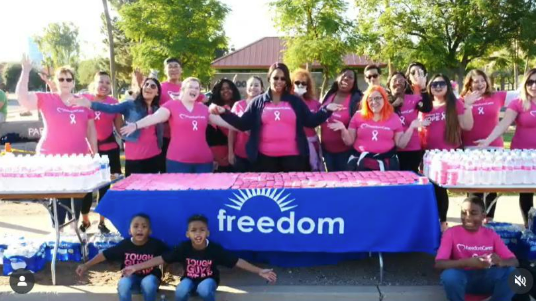
Bring Interactivity into Play—Literally.
Imagine you’re throwing a birthday party in the office. But your workers are just standing by the wall, as if total strangers at a bus stop, and silently (or not) chewing pizza. If that’s the case, you might want to get rid of awkwardness and create interactive and gamified experiences for higher employee engagement and fun levels.
Here’s how.
Interactivity Elements
Incorporate interactive elements as follows:
- Hilarious ice-breaking questions
- Wheel-of-fortune activities (e.g., choose who reports next by spinning the wheel)
- Trivia quizzes
- Puzzles
- Or other problem-solving challenges
For example:
The ISATIS team kicked off the retrospective meeting with mini-Olympics, including a staring contest and Pictionary.
Gamification Elements
Here’s how companies can gamify employee experiences and engage them more successfully during team meetings at work:
- Points, levels, and leaderboards
- Escape rooms with achievement badges
- Innovation challenges with prizes
- Photo/screenshot missions
- Scavenger hunts with awards
Share “Human” Moments, Not Just Obligatory Information.
Let’s be real—no one anticipates it like this: “Oh yeah, I can’t wait to hear 24 bullet points about our Q4 plan.” And everyone will snooze over the 18th slide in the presentation if there’s nothing humanly emotional about the meeting.
As a promoter of the people-centric approach in the workplace, Jeffrey Zhou, CEO and Founder of Fig Loans, asserts that team meetings should be more humanized. He explains, “Corporate gatherings should be more than just numbers like metrics and KPIs. Human-to-human connection is what truly matters. It’s emotional, and it’s bonding more than any number, even if it’s a huge corporate milestone.”
This can be:
- Random fact roulette
- Laughter breakout
- Appreciation circle
- Short storytelling round
For example:
Sharing personal stories with plenty of emotion is actually one of the key reasons the CWC team enjoys their weekly remote meetings. This way, they stay connected and share meaningful moments online from the coziness of their home offices.
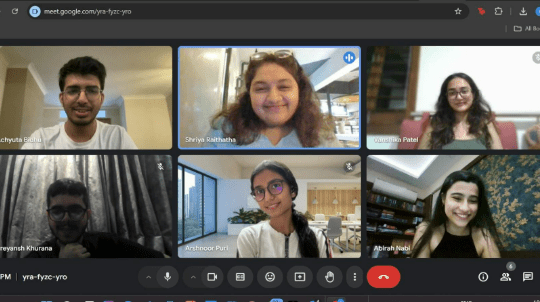
Start with Positivity and Wrap It Up With Positive Takeaway Emotions.
Beginning Your Meeting
Have you considered starting your team’s meet-up with a good piece of news? It could be a perfect spirit-booster to set the cheerful tone in the very first seconds.
For example:
Suppose you want to add a new wellness perk to employee benefits packages, let’s say, an app with on-demand online healthcare. Announce it at the very start of your corporate gathering—and you’ll most likely see your employees’ lips curving into smiles and shoulders dropping in relaxation. Now, they would feel much safer and relaxed. Why? It’s a positive piece of news for one thing. But it additionally shows that you do care about employee well-being (not just about deadlines).
Wrapping Up Your Meeting
Similarly, end it on a high note: “That was fantastic!” instead of “Phew, it’s over—finally!”
Let it be:
- Gratitude shout-out
- Happy emoji exit
- One-word mood check
- Micro-win sharing (e.g., everyone names one mini-victory of the week)
Plus, you can also capture such high notes and later place them into branded picture frames. Let them remind you of the most memorable (or even laughable!) moments during your corporate meetings.
Extend Your Impact Beyond the Meeting Room
Once you’ve reimagined your corporate gatherings, make sure your efforts reach a wider audience. Optimizing your event pages, blog posts, and recaps for search can help your message resonate beyond the meeting room, especially if your company shares updates, culture stories, or post-event highlights online.
Seo checker can help you identify opportunities to improve visibility and ensure your event content performs well in search results. You can analyze everything from metadata and readability to page speed — key elements that make your corporate storytelling more discoverable.
A few simple tweaks can make your company’s stories easier to find, attracting new talent, strengthening your brand, and showing the world what makes your culture special.
Learn More Tips and Add Meaning to Your Team Gatherings with Outback
If the word “meeting” still triggers flashbacks of countless slides in the traditional classroom-style environment (in your office) or “You’re on mute” messages with eye rolls (virtually in chat), you should definitely consider this. Enroll your team in the Effective Meetings training program by Outback and reimagine how you gather in the workplace or beyond.
Let your next team gathering be less sleepy with yawns and more meaningful and engaging.
Author Bio
Catherine Schwartz is an author who specializes in employee well-being and engagement.



